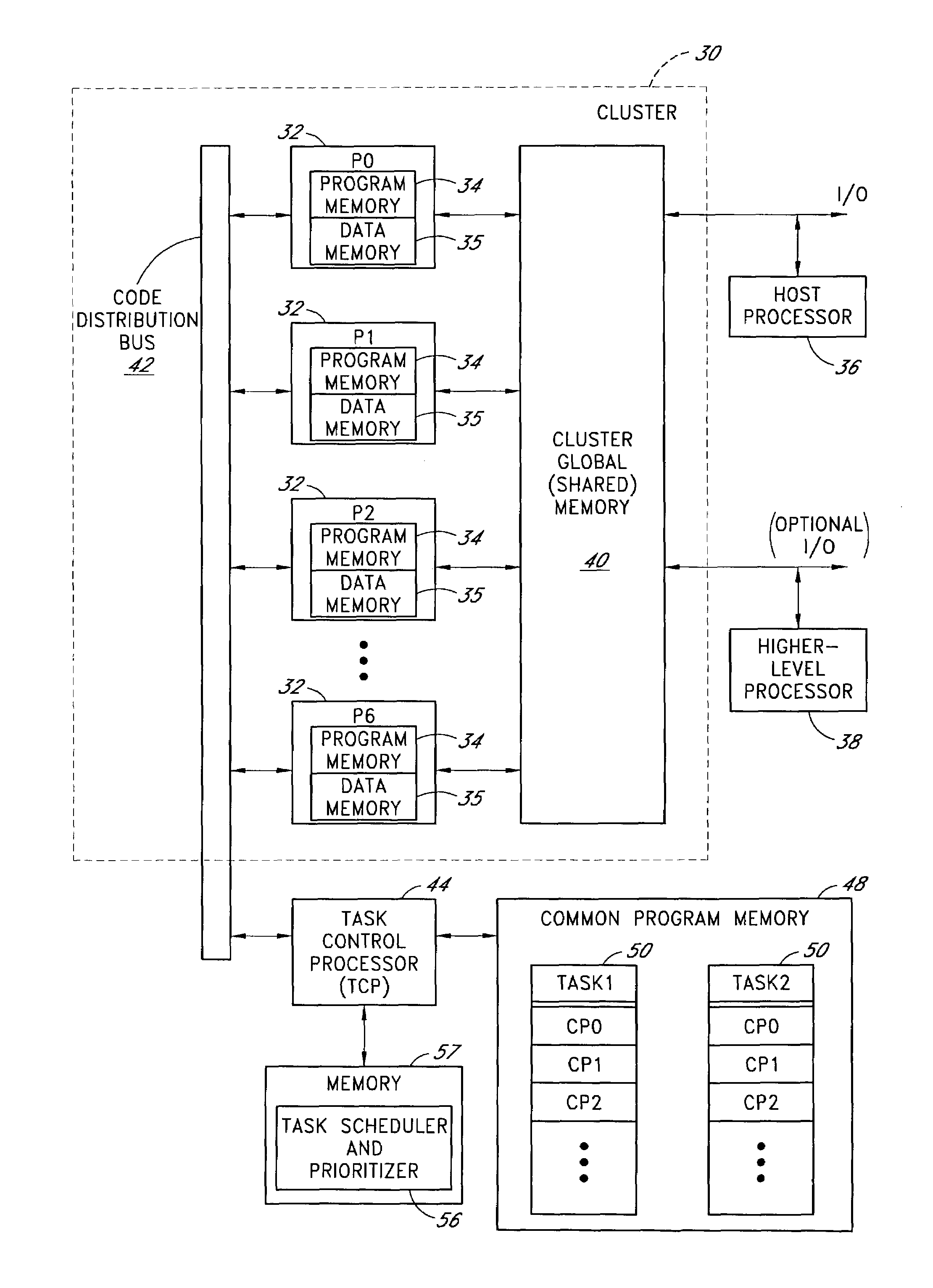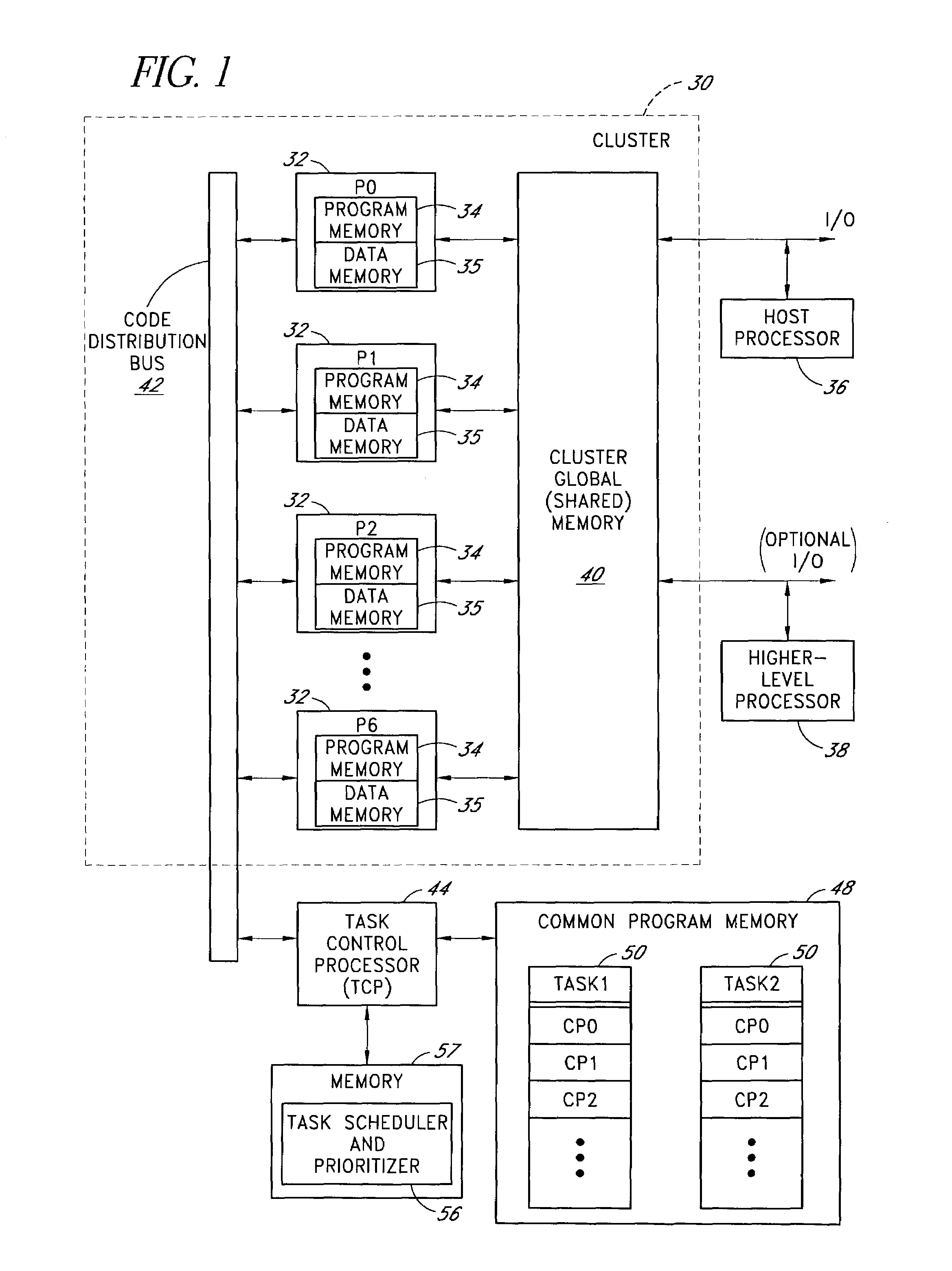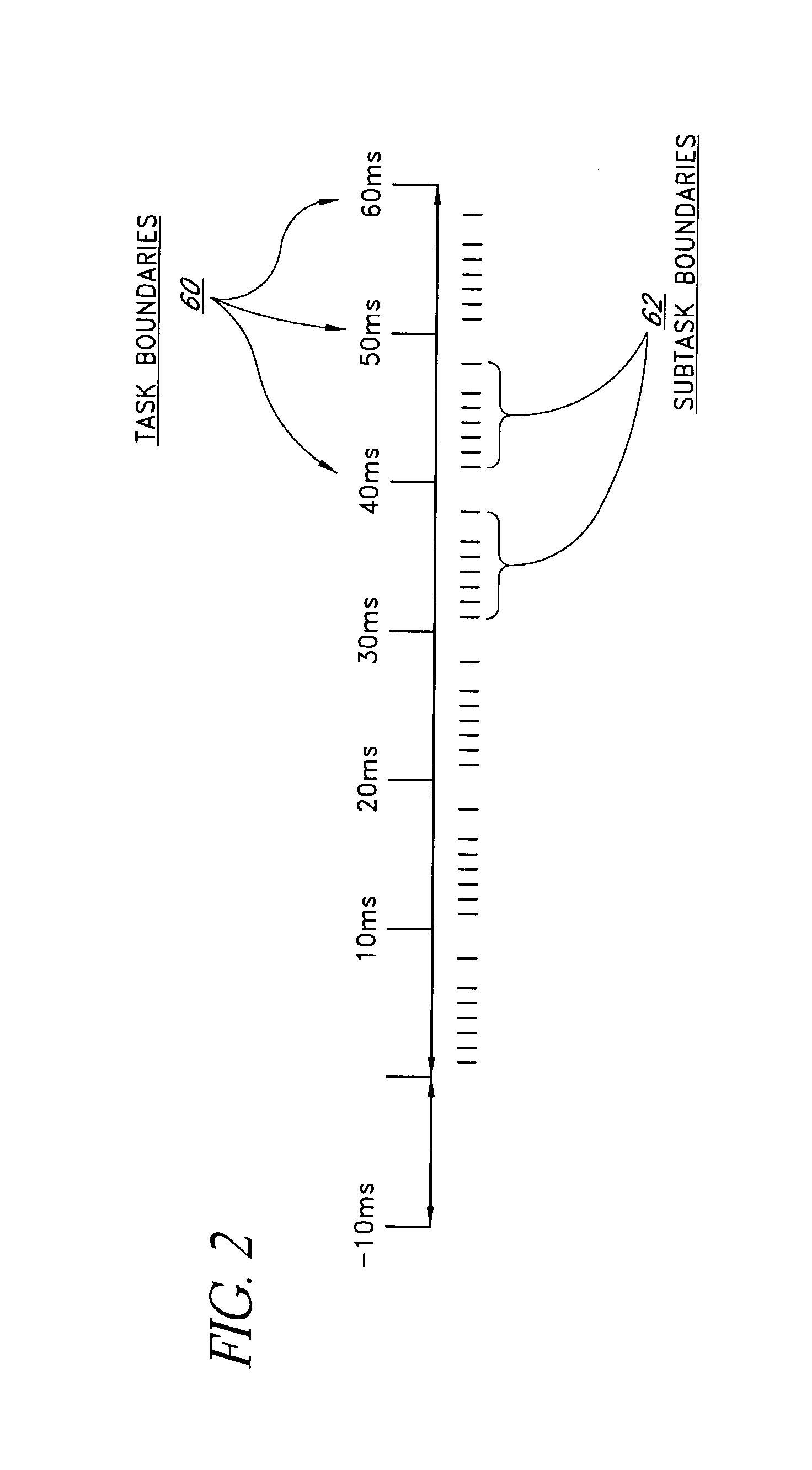Processor cluster architecture and associated parallel processing methods
a processing cluster and processing method technology, applied in the field of parallel processing data computer architectures, can solve problems such as unnecessary duplication of program memory, congestion, and difficulty in implementing instruction caching, and achieve the effect of high performan
- Summary
- Abstract
- Description
- Claims
- Application Information
AI Technical Summary
Benefits of technology
Problems solved by technology
Method used
Image
Examples
Embodiment Construction
[0023]FIG. 1 illustrates a parallel processing architecture according to one embodiment of the invention. This architecture combines some of the best features of SIMD, MIMD, and multitasking, and takes into account the need for modularity in System-On-Chip (SOC) products. As will be apparent, the architecture is particularly well suited for processing multiple instances of independent data streams or sets. Examples of applications for which the architecture may be used include voice channel processing, multi-channel data encryption, and 3G wireless base station receiver / transmitter functions.
[0024]As illustrated, the architecture comprises a cluster 30 of processors 32 (P0–P6), each of which has its own local program memory 34, local data memory 35, and a shared cluster global memory 40. Multiple clusters 30 of this type may be provided within a single SOC or other silicon device. For example, as described below with reference to FIG. 6, multiple clusters 30 may be arranged and inte...
PUM
 Login to View More
Login to View More Abstract
Description
Claims
Application Information
 Login to View More
Login to View More - R&D
- Intellectual Property
- Life Sciences
- Materials
- Tech Scout
- Unparalleled Data Quality
- Higher Quality Content
- 60% Fewer Hallucinations
Browse by: Latest US Patents, China's latest patents, Technical Efficacy Thesaurus, Application Domain, Technology Topic, Popular Technical Reports.
© 2025 PatSnap. All rights reserved.Legal|Privacy policy|Modern Slavery Act Transparency Statement|Sitemap|About US| Contact US: help@patsnap.com



